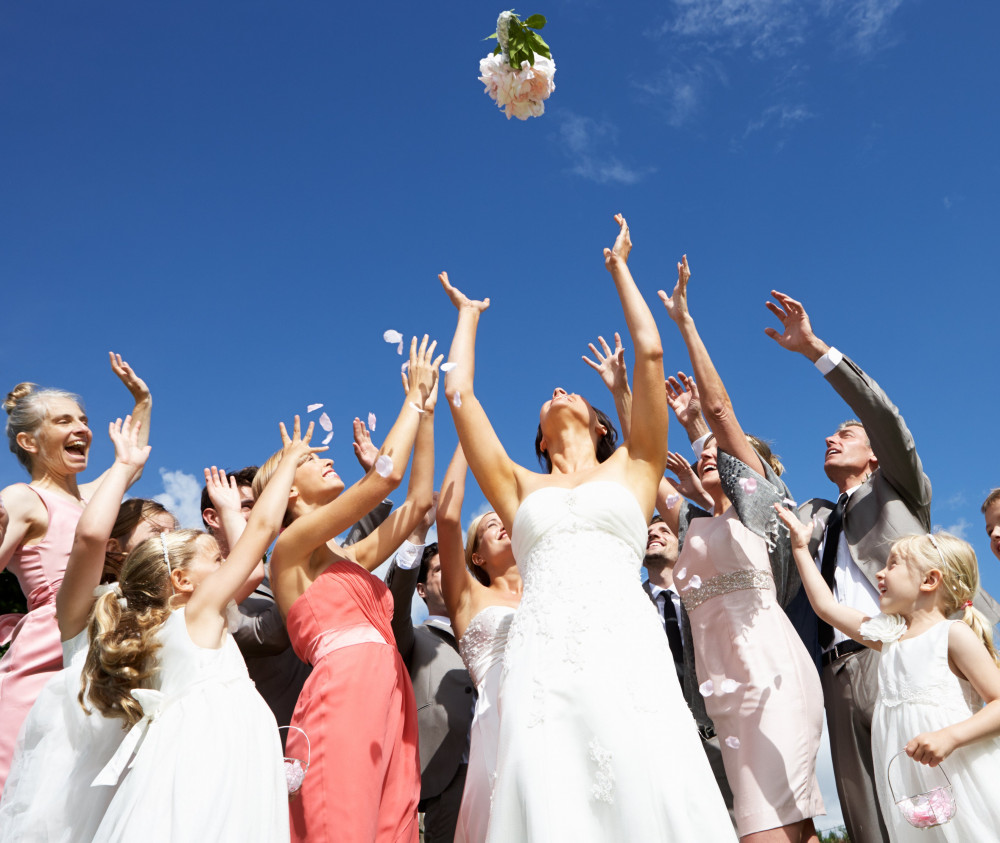
Wedding Traditions Around The World
Have you ever wondered about the intriguing and fascinating traditions that come with a wedding? From tea, origami cranes to wedding ‘breakfasts’. Join us on a journey around the world as we take a closer look at some of the wedding traditions and customs that have stood the test of time.
The UK
1. Something Old, Something New
It’s customary for the bride to incorporate "something old, something new, something borrowed, something blue" into her wedding attire. This tradition symbolises good luck, prosperity, and the continuity of love passed down through the generations. "Something old" represents a connection to the bride's family and her past, while "something new" represents optimism and hope for the future. "Something borrowed" is an item lent by a happily married friend or family member, signifying borrowed happiness and a strong foundation in marriage. And "something blue" is associated with purity, fidelity, and love.
2. Tiara’s
Inspired by grand royal weddings of old, tiaras are elegant and ornate headpieces that add a touch of regal glamour, symbolizing the bride's transformation into a princess on her wedding day. The tradition began after Queen Victoria's wedding in 1840 when she wore a stunning diamond tiara. Since then, tiaras have become a must-have accessory for brides looking to add a touch of royalty to their special day.
3. Throwing the Bouquet
We all know someone who’s either caught the bouquet … or had a tumble trying! Towards the end of the reception, the bride gathers all the single women onto the dance floor. She then turns her back and throws her bouquet over her shoulder. It’s believed that whoever catches the bouquet will be the next to walk down the aisle. A fun tradition that always causes a bit of excitement … and can also bring out the, ahem, competitive streak in a few!
4. Wedding Cake Toppers
The tradition of having a wedding cake topper on the cake goes back to Victorian times when a figurine of a bride and groom became a popular addition, representing the beginning of the couple’s journey together. The ‘topper’ has, over the years, evolved into a focal point on top of the wedding cake, sometimes caricature-like or depicting the couple and their hobbies.
5. The Wedding Breakfast
Traditionally, it was called a "breakfast" because it was the first meal the couple would have together after fasting for the wedding ceremony. Now, it simply refers to the first meal shared by the newly married couple and their guests as a thank you for attending and to kick start the celebrations.
And here’s some wedding traditions from around the globe …
India
- Mehndi Ceremony: In India, intricate henna designs are applied to the bride's hands and feet during this ceremony. The deeper the colour, the stronger the bond between the couple.
- Mangalsutra: During the wedding ceremony, the groom ties a sacred necklace, called the mangalsutra, around the bride's neck, symbolizing their eternal union.
- Saptapadi: The couple takes seven steps around a sacred fire, each step representing a marital vow. These steps are believed to solidify their bond for seven lifetimes.
Mexico
- Lasso Ceremony: A decorative rope, or "lasso", is placed around the couple's shoulders in a figure-eight shape to symbolize their eternal unity and the infinite love they share.
- Mariachi Bands: Vibrant and lively, mariachi bands add a festive touch to Mexican weddings, serenading the couple and their guests with traditional music.
- Breaking the Piñata: A custom borrowed from birthdays, breaking a wedding piñata filled with candies and treats signifies showering the couple with sweetness and good luck.
China
- Tea Ceremony: Chinese weddings often feature a traditional tea ceremony, where the couple serves tea to their parents and elders as a gesture of respect and gratitude.
- Red Dresses: Brides in China wear red dresses, as red symbolizes luck and happiness. The colour is believed to ward off evil spirits and bring good fortune.
- Firecrackers: To scare away evil spirits, firecrackers are set off during Chinese wedding ceremonies, creating a festive and auspicious atmosphere.
Japan
- Folding a Thousand Origami Cranes: In Japan, it’s customary for the couple to fold a thousand origami cranes as a symbol of patience, dedication, and a prosperous future together.
- Traditional Kimonos: Japanese brides wear exquisite kimonos during the ceremony, showcasing intricate patterns and vibrant colours that represent their cultural heritage.
- Sake Sharing: The couple shares sips of sake from three different cups, symbolizing their union and the blending of their families.
Italy
- Confetti Bombardment: In Italy, guests shower the couple with confetti (sugared almonds!) for good luck and fertility as they exit the ceremony.
- Love Locks: Couples attach padlocks to bridges and fences as a symbol of their unbreakable love. The keys are often thrown into nearby rivers, signifying a lasting bond.
- Italian Feast: A spectacular wedding feast known as "La Cena" awaits guests. It features an abundance of delicious food, plenty of wine, and celebrations that can last late into the night.
Wedding traditions are a fascinating peek into the wonderful cultures across the world. From the tea ceremonies of China to the royal tiaras of the UK, each tradition has a story steeped in history. So, whether you're saying "I do" with a lasso in Mexico or folding a thousand origami cranes in Japan, may these traditions inspire you to embrace love and tie the knot! Cheers to all the diverse traditions that make weddings memorable and magical!
